Preserving the manuscripts of the Holy Qur’an: A comparative study with the manuscripts of the People of the Book
- Get link
- X
- Other Apps
Ive shared a lot of threads on compilation n authenticity of Quran and 300+ proofs of Bible corruption
|
A picture of the manuscripts of the Qur’an of Uthman ibn Affan in Cairo |
Prepared by Firas Walid
Director of the Encyclopedia of Scientific Miracles in the Quran
God Almighty said in His Noble Book: (Indeed, it is We who sent down the Qur'an and indeed, We will be its guardian) [19: Surah Al-Hijr], and He Almighty said: (Do they not then consider the Qur'an carefully? Had it been from other than God, they would surely have found therein much discrepancy) [82: Surah An-Nisa].
Perhaps one of the most important aspects of the miracle of the Holy Qur’an is its preservation from distortion. Perhaps one of the most important aspects of its preservation from distortion is the preservation of its manuscripts currently in Western and Arab museums in excellent condition, despite the passage of more than 1431 years since these manuscripts were written, many of which date back to the first century AH and some of which date back to the first years of the mission in the handwriting of the scribes of revelation, such as Ali ibn Abi Talib and Zaid ibn Thabit, may God be pleased with them.
Stages of writing the Qur’an:
During the era of the Prophet, may God bless him and grant him peace: The Prophet, may God bless him and grant him peace, was keen to record what was revealed to him from the Qur’an, to the point that he initially forbade writing anything other than the Qur’an, as he said in the hadith of Abu Sa’id al-Khudri (Do not write anything from me other than the Qur’an, and whoever writes from me other than the Qur’an should erase it).
The Prophet’s scribes, peace and blessings be upon him, numbered forty-three scribes, as mentioned above, some of whom were dedicated to writing down the revelation. Perhaps the most famous of them were: Uthman ibn Affan, Ali ibn Abi Talib, Ubayy ibn Ka’b, Zayd ibn Thabit, Abdullah ibn Sa’d ibn Abi Sarh, and Hanzalah ibn al-Rabi’. The Prophet, peace and blessings be upon him, was interested in recording the Qur’anic text since it began to be revealed to him in Mecca. It was mentioned in the story of the conversion of Omar ibn al-Khattab, may God be pleased with him, that Surah Taha was written on a scroll in the house of Fatima bint al-Khattab, Omar’s sister, and she and her husband Khabbab ibn al-Arat used to recite the Qur’an from it. This scroll that recorded Surah Taha was only one of many scrolls that were circulating among those who converted to Islam from the people of Mecca, which recorded other surahs of the Qur’an. Ibn Abi Dawud narrated: Muhammad ibn Yahya told us, Abu Salih told us, Al-Layth told us, on the authority of Abu Uthman Al-Walid ibn Abi Al-Walid, on the authority of Sulayman ibn Kharijah ibn Zayd, on the authority of Kharijah ibn Zayd, that he said: (A group of people entered upon Zayd ibn Thabit and said: Tell us some of the hadith of the Messenger of God, may God bless him and grant him peace. He said: What shall I tell you? I was the neighbor of the Messenger of God, may God bless him and grant him peace, and whenever the revelation came down, he would send for me and I would write down the revelation..) And whenever the revelation came down to him, may God bless him and grant him peace, he would say to those with him: Call Zayd for me, and let him bring the tablet and inkwell or the shoulder blade and inkwell, then he would say to him: Write.. and he would dictate the verses to him.
It should be noted here that the Prophet, may God bless him and grant him peace, used to review with the Companions what they wrote of the Qur’an. It is narrated on the authority of Zayd ibn Thabit that he said: “I used to write the revelation with the Messenger of God, may God bless him and grant him peace, and he would dictate to me. When I finished, he would say: ‘Read it, and if there was an omission in it, he would correct it.’”
Scholars have stated that (the entire Qur’an was written during the time of the Messenger of God, may God bless him and grant him peace, on scrolls, tablets, and palm leaves, but it was not collected in one place, nor was the surahs arranged). (Lata’if al-Isharat li Funun al-Qira’at - al-Qastalani - Shihab al-Din Ahmad ibn Muhammad ibn Abi Bakr). If all of these reports have any significance, the first thing they indicate is that the Messenger of God, may God bless him and grant him peace, aimed to record the entire Qur’an, thus ensuring that nothing of it would be lost or missing. In doing so, he established the collection and writing of the Qur’an, and ordered that and dictated it to his scribes. He, may God bless him and grant him peace, did not die until a group of the Companions had memorized the entire Qur’an, and the rest had memorized it all in separate parts or had known it and learned its locations and positions in a way that is known today by those who are not memorizers of the entire Qur’an. (Lata’if al-Isharat li Funun al-Qira’at - al-Qastalani - Shihab al-Din Ahmad ibn Muhammad ibn Abi Bakr).
The collection of the Qur’an in the Mushaf of Imam during the reign of Abu Bakr:
After the death of the Prophet, may God bless him and grant him peace, and the killing of many of the memorizers of the Qur’an while suppressing the seditions that broke out after the death of the Prophet, especially in the Battle of Yamamah, Omar bin Al-Khattab feared that the Qur’an would be lost due to the killing of its memorizers, so he advised Abu Bakr to collect the Qur’an in a Mushaf. Abu Bakr ordered Zaid bin Thabit to collect the Qur’an in an Imam Mushaf, and this was done under his supervision and in the presence of a committee of the Companions.
Uthman's copies of the Qur'an:
On the authority of Anas bin Malik: That Hudhayfah bin Al-Yaman came to Uthman while he was fighting the people of Ash-Sham in the conquest of Armenia and Azerbaijan with the people of Iraq. Hudhayfah was alarmed by their differences in recitation, so Hudhayfah said to Uthman, “O Commander of the Faithful, save this nation before they differ in the Book as the Jews and Christians differed.” So Uthman sent to Hafsa, saying, “Send us the manuscripts so that we may copy them into the copies of the Qur’an and then return them to you.” So Hafsa sent them to Uthman, and he ordered Zaid bin Thabit, Abdullah bin Az-Zubayr, Saeed bin Al-Aas, and Abd Al-Rahman bin Al-Harith bin Hisham to copy them into the copies of the Qur’an. Uthman said to the three Quraysh men, “If you differ over anything in the Qur’an, write it in the dialect of Quraysh, for it was revealed in their dialect.” So they did so, and when they had copied the manuscripts into the copies of the Qur’an, Uthman returned the manuscripts to Hafsa and sent to every region a copy of what they had copied, and he ordered that everything else from the Qur’an in every manuscript or copy of the Qur’an be burned. Ibn Shihab said, and Kharijah bin Zaid bin Thabit informed me that he heard Zaid bin Thabit say, “I lost a verse from Al-Ahzab when we copied the Qur’an.” I used to hear the Messenger of God, may God bless him and grant him peace, recite it, so we looked for it and found it with Khuzaymah ibn Thabit al-Ansari (Among the believers are men true to what they pledged to God) narrated by al-Bukhari.
Thousands of manuscripts of the Qur’an, many of which date back to the first centuries of the Hijra, such as the Qur’an written in the handwriting of our master Ali bin Abi Talib (which is part of the Sana’a manuscript collection and is located in the permanent Sana’a Qur’an Exhibition at the House of Manuscripts), are still distributed in international museums in Turkey, Cairo, Sana’a, Paris, London, etc., and are in good condition as a documented document indicating the impossibility of distortion in the Holy Qur’an, as it is now as it was revealed to our master Muhammad, may God bless him and grant him peace, 1431 years ago.
Real-life examples of the survival of Qur’anic manuscripts:
- Sana'a Mushaf Manuscripts:
The most important discovery in our modern era in the world of ancient Qur’ans was 40,000 parchment pages of the Holy Qur’an found on the ceiling of the Great Mosque in Sana’a in the year 1385 AH, corresponding to 1965 AD. They date back to the first, second and third centuries AH. Because of their antiquity and their large number, they are considered the most important ancient Qur’an in the Islamic world.
It was studied by a German committee from the University of Hamburg, and Professor Ghassan Hamdoun, a specialist in Quranic manuscripts and readings, studied the manuscripts and classified several books, including the book ( Quranic Manuscripts in Sana’a from the First and Second Centuries AH and the Preservation of the Holy Quran ).
UNESCO also published pictures of Qur’anic manuscripts from the Sana’a Qur’an collections on its website :
Here are some pictures of these manuscripts that can be viewed in their large format by clicking on them:
Surat Al-Mursalat (5-27) It dates back to the period between the second and third centuries AH. |
|
| Surah Al-Isra from verse 20 to 22 |
|
| Surah Al-Ma’idah from verse (60 to verse 61) |
|
| The rings of Surat Al-Ma’ah and the beginning of Surat Al-An’am The manuscript dates back to (between the second and third Qur’an AH) |
|
For more information, you can download the book God in the Miracle Manifested as a compressed PDF file.
|
- Manuscripts of the Qur’an of Uthman ibn Affan (Topkapi Palace Museum, Istanbul)
|
Cover of the Mushaf of Uthman ibn Affan, issued by IRCICA |
This original copy of the Qur’an is preserved in the Topkapi Palace Museum in Istanbul, and its fame has spread throughout the world. According to the documentation of this copy, it is clear that the Qur’an was preserved in the Treasury of Precious Books in Cairo, and then the Governor of Egypt, Muhammad Ali Pasha, presented it to the Ottoman Sultan Mahmud II in 1226 AH - 1811 AD. This rare copy has been preserved in the Topkapi Palace since that date as part of the sacred trusts. Once the palace was converted into a museum open to the public, the handwritten Qur’an became the most important thing seen by thousands of visitors as one of the rare treasures, and it leaves an impact on Muslims in particular and those interested in the eternal heritage of Islam, researchers and scholars.
This manuscript copy of the Holy Qur’an was studied, verified and printed at the expense of His Highness Sheikh Dr. Sultan bin Muhammad Al Qasimi, Ruler of Sharjah and Member of the Supreme Council of the United Arab Emirates. The scientific verification of this Qur’an and its preparation for publication was carried out by Professor Dr. Tayyar Altıkolaj, a well-known expert in Qur’anic sciences in Turkey, the former head of the Religious Affairs Authority and a member of the National Assembly in the Istanbul district.
The text of the Holy Qur’an is (820) pages in large size, starting from Surat Al-Fatihah and ending with Surat An-Nas.
The Research Center for Islamic History, Art and Culture in Istanbul (IRCICA) issued a study and investigation of the Qur’an attributed to the Rightly-Guided Caliph Uthman ibn Affan.
- Manuscripts of the Qur’an of Uthman ibn Affan (Cairo)
The third copy of the Qur’an of the Rightly-Guided Caliphs, the Commander of the Faithful, Dhul-Noorayn, Uthman ibn Affan, may God be pleased with him. This Qur’an is a copy of the six copies of the Qur’an that were copied by the order of Uthman, may God be pleased with him. He then sent four of them to the provinces, and two of them remained in Medina. This Qur’an was preserved in the library of the Fadiliyya School, which was built by the judge Fadil Abd al-Rahim al-Baisani al-Asqalani - in the Ayyubid era - then Sultan al-Malik al-Ashraf Abu al-Nasr Qansuh al-Ghawri - the last sultan of the Mamluk state - moved it to the dome that he built opposite his school near al-Aqba’iyyin inside Bab Zuweila, and he also moved the Prophet’s relics to it, and made a special cover for it on which was engraved that it was made eight hundred and seventy-four years after the writing of the Uthmanic Qur’an - meaning that it was made in the year 909 AH - and it remained preserved there for three centuries, and it is as follows:
In 1305 AH, the Qur’an, the cover and the Prophet’s relics were transferred to the shrine of Imam Hussein, may God be pleased with him. In 1427 AH, the Central Library of Islamic Manuscripts transferred it to the library, where it was documented and its pages photographed for the first time on CDs.
|
A picture of the Qur’an of Uthman ibn Affan placed in a glass box in Al-Hussein Mosque in Cairo |
Comparison with Bible Manuscripts:
The sources and literature of the Bible and the Torah agree that the original manuscripts of the Bible have been lost. Here is this text as an example : (We do not have the original manuscripts now, that is, the handwritten copy of the writer of any book of the New Testament or the Old Testament. These manuscripts may have been worn out due to overuse, or some of them may have been damaged or hidden during times of persecution, especially since some of them were written on papyrus, which is easily damaged.) (Source: Manuscripts of the Bible in its Original Languages, authored by Deacon Dr. Maher Emil Ishaq).
Here are exact copies of pages from books of some of the most important church references. To view the pages in their original size, please click on the thumbnails, quoted from an article entitled “ The Loss of the Original Copies of the Holy Bible, as Admitted by All Christian Scholars.”
| Reference Name | Image of the reference |
| The Student's Guide to the Precious Bible, p. 15
|  |
| (The book Introductions to the Old Testament by Dr. Wahib George, complete page 24) |
|
| The Biblical Encyclopedia - Part Three - Page 279. Some priests participated in the encyclopedia, including:
Dr. Reverend Samuel Habib, Head of the Evangelical Community in Egypt (formerly)
| 
|
(The book of the Holy Bible Manuscripts in its Original Languages by Dr. Priest Emil Maher Ishaq, Professor of the New Testament and Theology at the Clerical College and the Coptic Language at the Coptic Language Institute in Cairo, page 19.) |  |
| (A guide to reading the Holy Bible, written by Father Stephan Charpentier, translated into Arabic by Father Sobhi Hamwi, the Jesuit, page 234) | 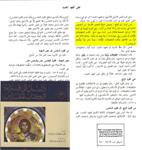 |
| Bible Dictionary page 844, also available online, with participation from more than twenty pastors from the Evangelical Church and others. | 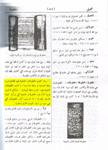 |
| A general idea about the Holy Bible From the Coptic Markos Magazine They wrote in the book’s data in the introduction to the book that the book is made up of articles published between 1968 and 1970, along with articles by Father Matta Al-Meskeen. |  |
| Introduction to Biblical Criticism by Engineer Youssef Daoud Riyad, page 26 - It is a small Catholic book | 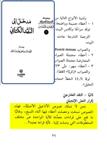 |
| The Book of the Inspiration of the Holy Book by Youssef Riad, page 65 |  |
| (10) The Holy Bible - Translation of the Jesuit Fathers or the Jesuit Order Introduction to the New Testament Page |  |
Distortion of Bible manuscripts:
The manuscripts of the Bible have been subjected to distortion over hundreds of years, and they are not original manuscripts because the original manuscripts were lost, as we mentioned previously. The most important of these manuscripts are (the Vatican manuscripts, or what is known as the Vatican Codex), the Nag Hammadi manuscripts, and the Sinai manuscripts. Here are pictures of the most important distortions that are clearly visible on them.
|
| A picture of page 1512 of the Vatican Codex preserved in the Vatican Museum, where you can see on the left a commentary on the beginning of the Epistle to the Hebrews, where the commentary says (O fool, O deceiver, can you not leave the ancient reading as it was and not distort it?). |
|
A picture of tampering with the Vatican manuscripts. We find that someone tampered with them, erasing whatever he wanted to erase from their texts and adding a text of his own. Here is a scientific example. In the following picture, the Gospel of Matthew 16:20 on page 1257 of the Vatican volume was tampered with by late hands. |
|
Here is another absurdity at the beginning of the Book of Daniel on page 1207 of the Vatican Codex: |
|
This is another absurdity in Luke 10:39 and is found on page 1325 of the Vatican manuscripts. |
|
Here is another mischief by a later copyist who adds to the Vatican manuscript but is betrayed by the colour of the ink, as the colour of the ink is different on the third line and half of the fourth line. |
Those who would like more details about distortion can download the following book:
Conclusion:
The Holy Quran is the only preserved book that God Almighty has pledged to preserve. One of the manifestations of its preservation is the preservation of its manuscripts, which have remained intact until now and are completely identical to the copies of the Quran that we have in our hands, which are considered a historical document that has not been distorted, unlike the Holy Bible, whose original documents have been lost and what remains of them has been distorted. Thus, the Holy Quran is the Holy Book that has remained as it is, fresh and tender, without distortion, as it was revealed to Muhammad, may God bless him and grant him peace, and it is the most deserving of being followed.
the reviewer:
Sana'a is the first city to have Quranic scrolls
http://www.almotamar.net/news/23073.ht
– UNESCO Archives: Memory of the World Project
http://www.unesco.org/webworld/mdm/visite/sanaa/en/present1.html
http://www.unesco.org/webworld/mdm/visite/sanaa/en/present2.html
Manuscripts of the Qur’an of Uthman ibn Affan (Topkapi Palace Museum, Istanbul)
http://www.tafsir.net/vb/showthread.php?t=11536
IRCICA website specialized in printing manuscripts
http://www.ircica.org
Manuscripts of the Qur’an of Uthman ibn Affan in the Husseini shrine
http://makhtoot.com/vb/t110.html
– Center for Middle Eastern and Islamic Studies – US Naval Academy website – Quranic manuscripts
http://www.usna.edu/Users/humss/bwheeler/quran/quran_index.html
Documented loss of the original copies of the Bible, as acknowledged by all Christian scholars.
http://www.tanseerel.com/main/articles.aspx?article_no=2576&menu_id=5
Al-Muhtadin Library for Comparative Religions
http://www.al-maktabeh.com/ar/list.php?cat=5
- Get link
- X
- Other Apps

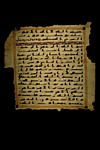
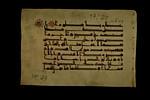
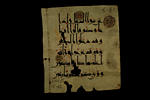
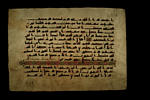
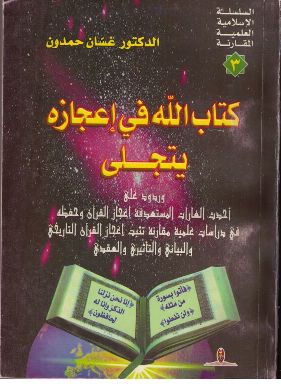
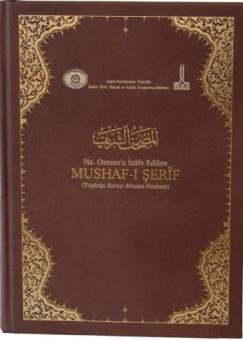

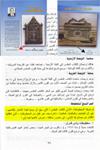
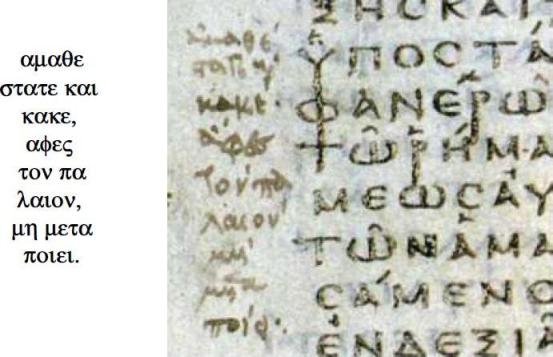


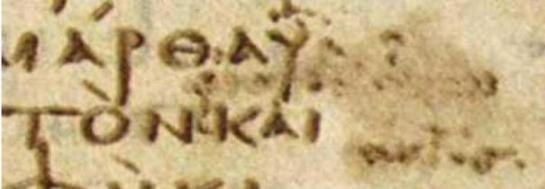
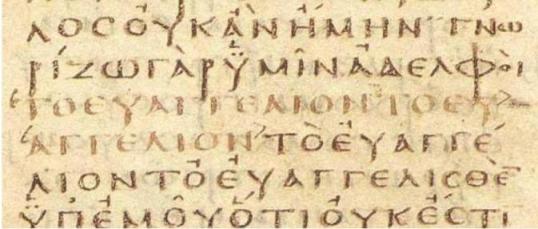
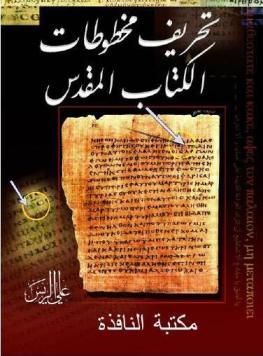

Comments
Post a Comment